Key takeaways
- Activist teacher resources empower educators to connect deeply with students and communities, balancing advocacy and education.
- Effective planning for charity projects requires clear steps, community involvement, and realistic budgeting to prevent overwhelm.
- Gathering community support hinges on active listening and fostering trust among participants, transforming individual efforts into collective missions.
- Documenting the charity experience through stories and reflections not only preserves memories but also inspires future initiatives and celebrates growth.

Understanding activist teacher resources
Activist teacher resources are more than just materials; they are tools that empower educators to spark change both inside and outside the classroom. From my experience, these resources provide practical strategies and inspiring stories that embolden teachers to connect with their students and communities on a deeper level. Have you ever paused to think about how much influence a well-chosen resource can have on your motivation to act?
What strikes me most is how these resources often balance advocacy with education, making it easier to approach sensitive issues thoughtfully. When organizing my local charity project, I leaned heavily on activist teacher guides that offered not just facts, but also ethical frameworks and real-world examples. That combination helped me navigate challenges and stay grounded in my purpose.
I sometimes wonder if we fully appreciate the potential of these resources to build solidarity among educators facing similar struggles. They don’t just share information; they create a sense of belonging and collective strength. In my journey, knowing others were equipped with the same tools made me feel less isolated and more committed to making a difference.
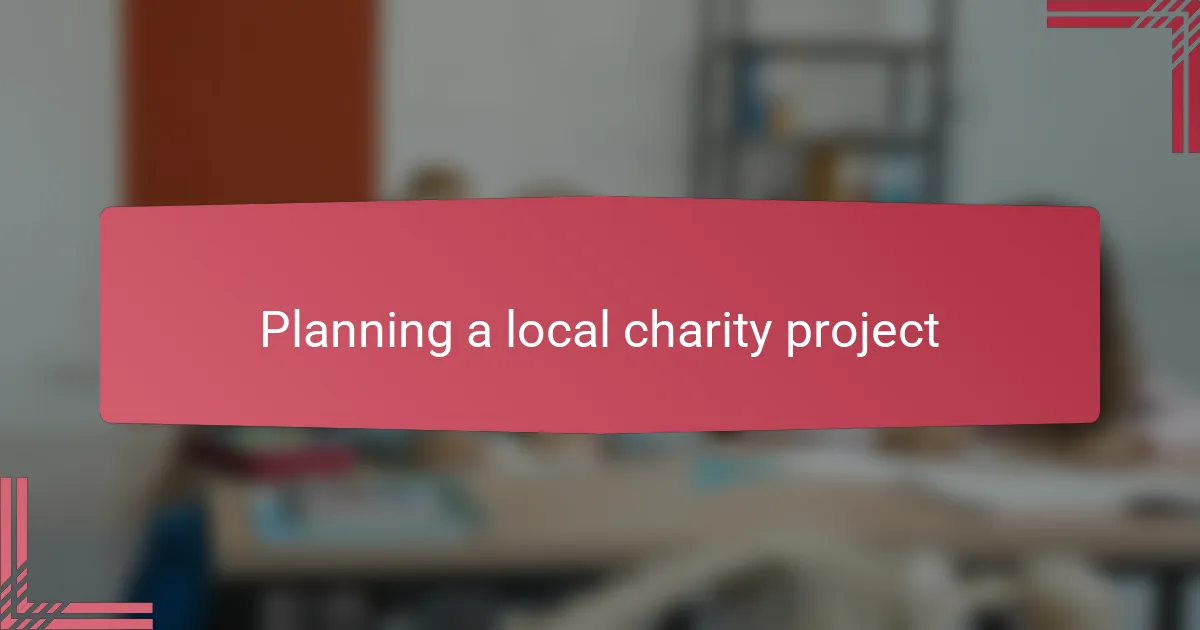
Planning a local charity project
Planning a local charity project requires more than just a good idea; it demands clear steps and thoughtful organization. When I first started, I made a simple checklist—defining the cause, setting goals, and figuring out resources. It might sound basic, but having that roadmap kept me focused and prevented overwhelming moments.
I also found that involving others early on made a huge difference. Asking myself, “Who can I count on?” shifted my perspective from solo effort to community collaboration. Reaching out to local teachers and parents not only spread the workload but brought energy and fresh ideas that I hadn’t considered before.
Budgeting felt intimidating at first, yet breaking it down into manageable pieces helped me stay realistic. How much do we really need? Where can we find donations or support? These questions kept me grounded and ensured the project stayed feasible, which made the actual work much less stressful.
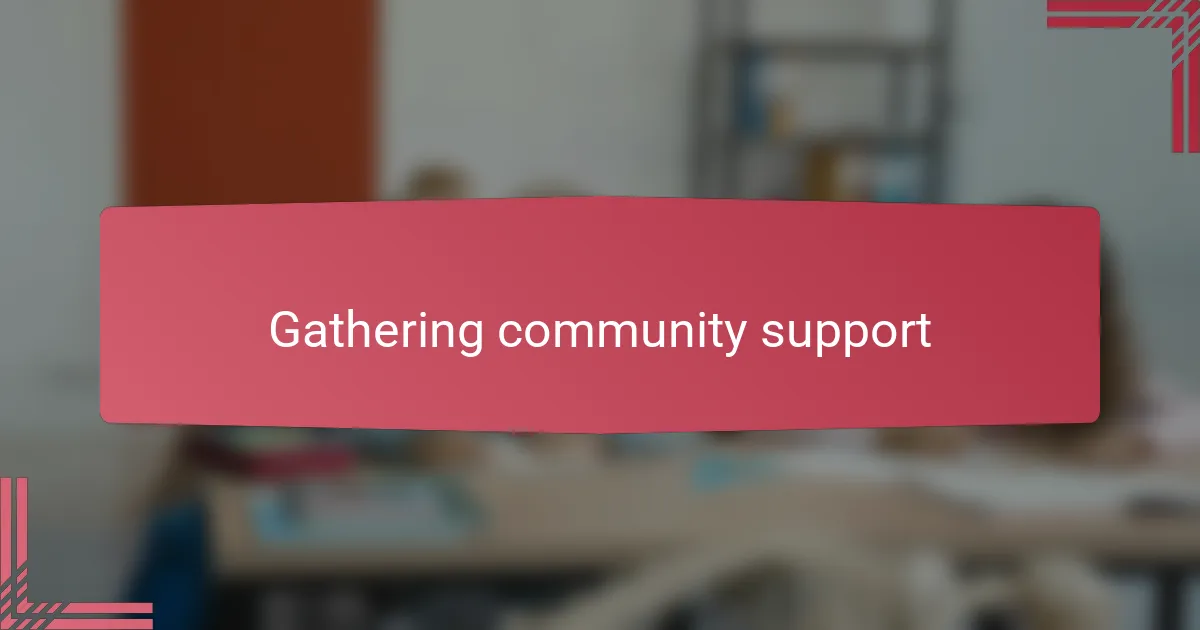
Gathering community support
When it came to gathering community support, I quickly realized that listening was more powerful than just talking. I reached out to neighbors, local business owners, and fellow educators, not only to ask for help but to understand what mattered most to them. Isn’t it amazing how inviting someone’s voice can turn a simple idea into a shared mission?
I remember feeling a mix of excitement and nervousness at the first community meeting. Seeing familiar faces show up with genuine interest reminded me that this project was no longer just mine—it belonged to all of us. That moment sparked a sense of hope and a real connection that fueled the work ahead.
Finding allies wasn’t always easy; sometimes, I faced quiet hesitations or doubts. But each small “yes” felt like a victory worth celebrating. Have you ever noticed how those little moments of encouragement can become the foundation of something much bigger? That’s exactly what happened as trust grew and the circle of support expanded.
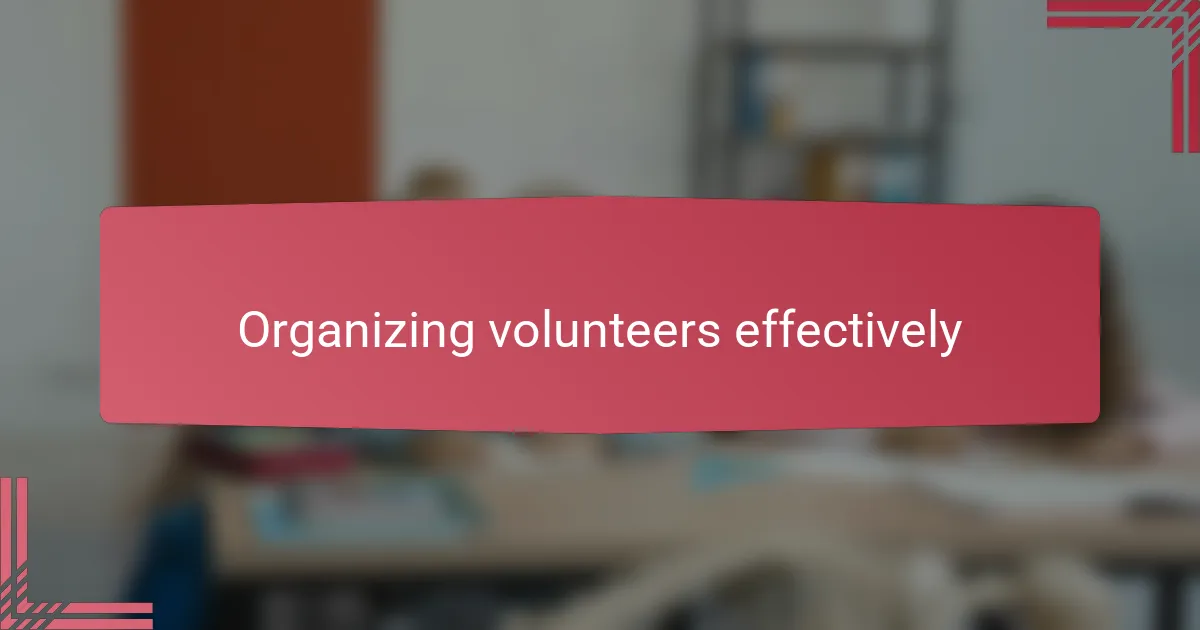
Organizing volunteers effectively
Coordinating volunteers isn’t just about assigning tasks; it’s about recognizing individual strengths and creating a shared sense of purpose. When I organized my team, I took time to connect personally, asking what motivated each person and tailoring roles accordingly. Have you ever noticed how people step up more confidently when they feel truly valued?
Clear communication became my anchor. I set up a simple messaging group where everyone could ask questions, share updates, and celebrate small wins. This openness didn’t just keep us organized; it built trust and made the whole experience more enjoyable for everyone involved.
Managing schedules flexibly was another lesson I learned the hard way. Life happens, and volunteer availability can change unexpectedly. By encouraging a supportive attitude rather than strict attendance, I noticed the commitment deepened rather than faltered. Could a little flexibility be the key to sustaining volunteer energy? In my experience, it absolutely is.
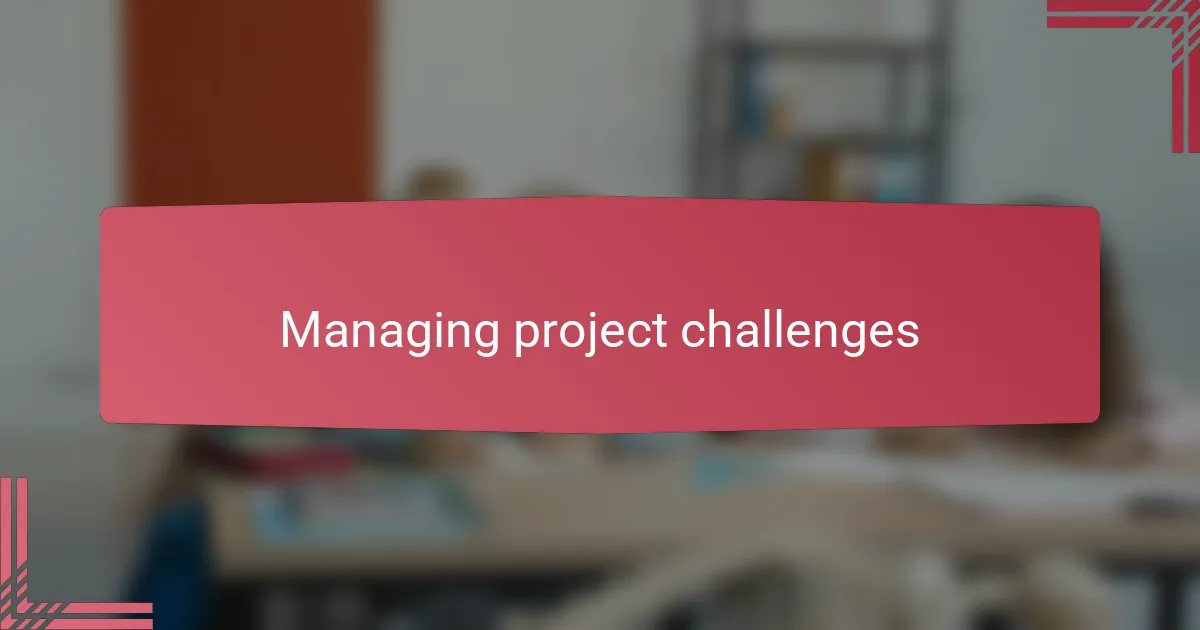
Managing project challenges
Challenges surfaced early in the project, especially when unexpected setbacks tested my resolve. I remember the frustration when a key donation fell through just days before our event—have you ever felt that sinking feeling when plans suddenly shift? It forced me to rethink quickly and rally the team around alternative solutions, reminding me that adaptability is essential.
Balancing enthusiasm with realistic expectations was another hurdle. At times, I struggled between wanting to do everything and knowing that resources, especially time, were limited. How do you decide what’s most important without losing momentum? In my case, focusing on core goals helped prevent burnout and kept the project moving forward.
Communication breakdowns also created tension, even within a passionate group. I learned that regularly checking in, being transparent about challenges, and encouraging open dialogue made a huge difference. What I found surprising was how a simple honest conversation could clear misunderstandings and strengthen our collective commitment.
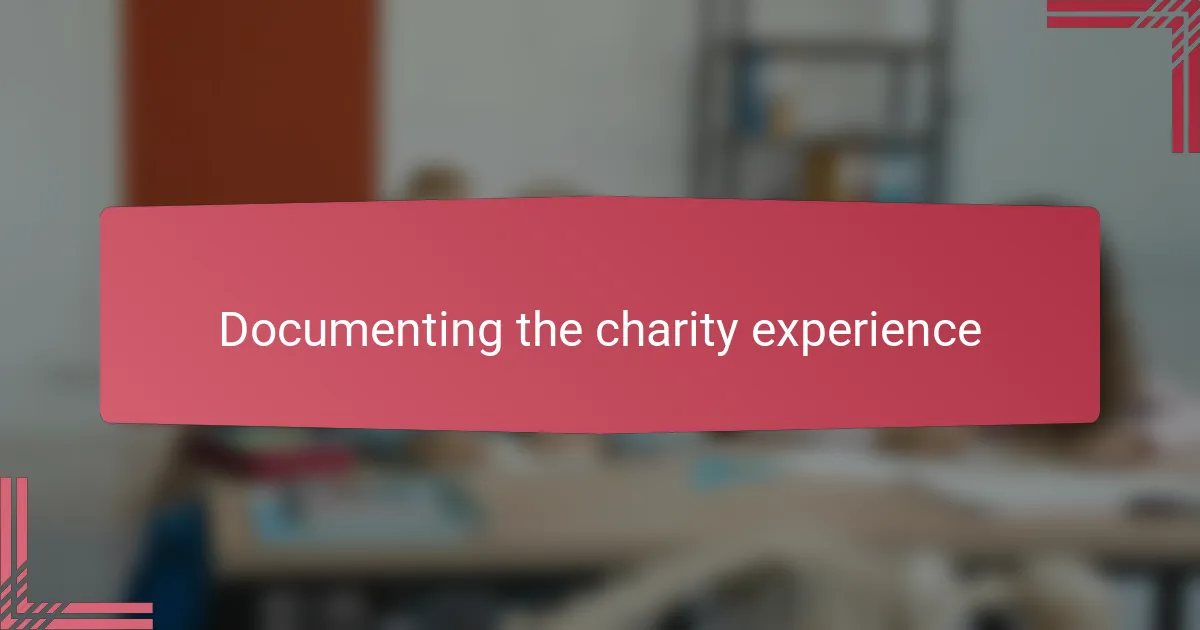
Documenting the charity experience
Documenting the charity experience became a surprisingly powerful tool for me. I started by jotting down key moments—unexpected successes, challenges, and even doubts—as they unfolded. Have you ever noticed how writing things down not only preserves memories but also helps make sense of the chaos?
Capturing stories from volunteers and beneficiaries added layers of meaning I hadn’t anticipated. Their voices brought the project to life and reminded me why every effort mattered. It made me realize that these narratives aren’t just for record-keeping—they inspire others to join or start something similar.
I also used photos and simple reports to track progress and share milestones with the community. Looking back, this documentation wasn’t just about accountability; it became a way to celebrate growth and fuel motivation. Have you tried reflecting on your work this way? It truly changes how you see the impact.
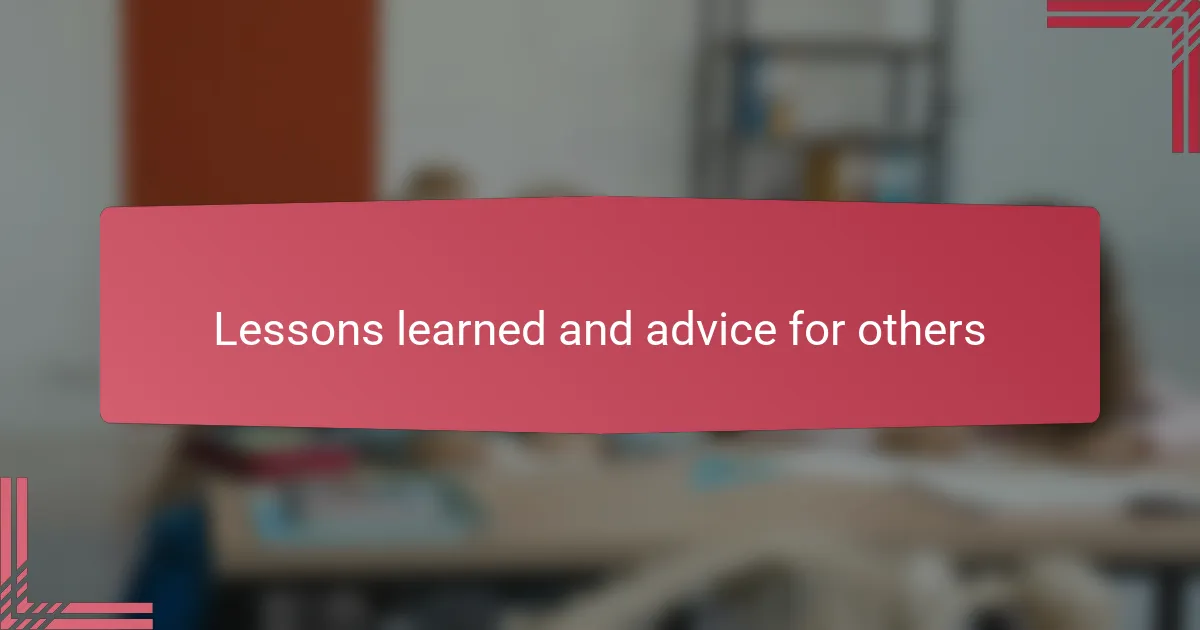
Lessons learned and advice for others
One lesson that stood out to me was the value of patience—things rarely go exactly as planned, and that’s okay. I learned to embrace setbacks as opportunities to adjust and grow rather than as failures. Have you ever noticed how stepping back and reassessing can sometimes open doors you hadn’t even considered before?
I would also advise others not to underestimate the power of small gestures—whether it’s a thank-you note to a volunteer or acknowledging a community member’s effort. These moments build trust and deepen commitment in ways that formal structures often can’t. From my experience, genuine appreciation keeps the momentum alive and strengthens the sense of shared purpose.
Finally, don’t hesitate to lean on your network and resources. When I felt overwhelmed, reaching out for advice or sharing challenges made a world of difference. Why struggle alone when collaboration not only lightens the load but enriches the entire experience? It’s a lesson I carry with me in every project I take on.